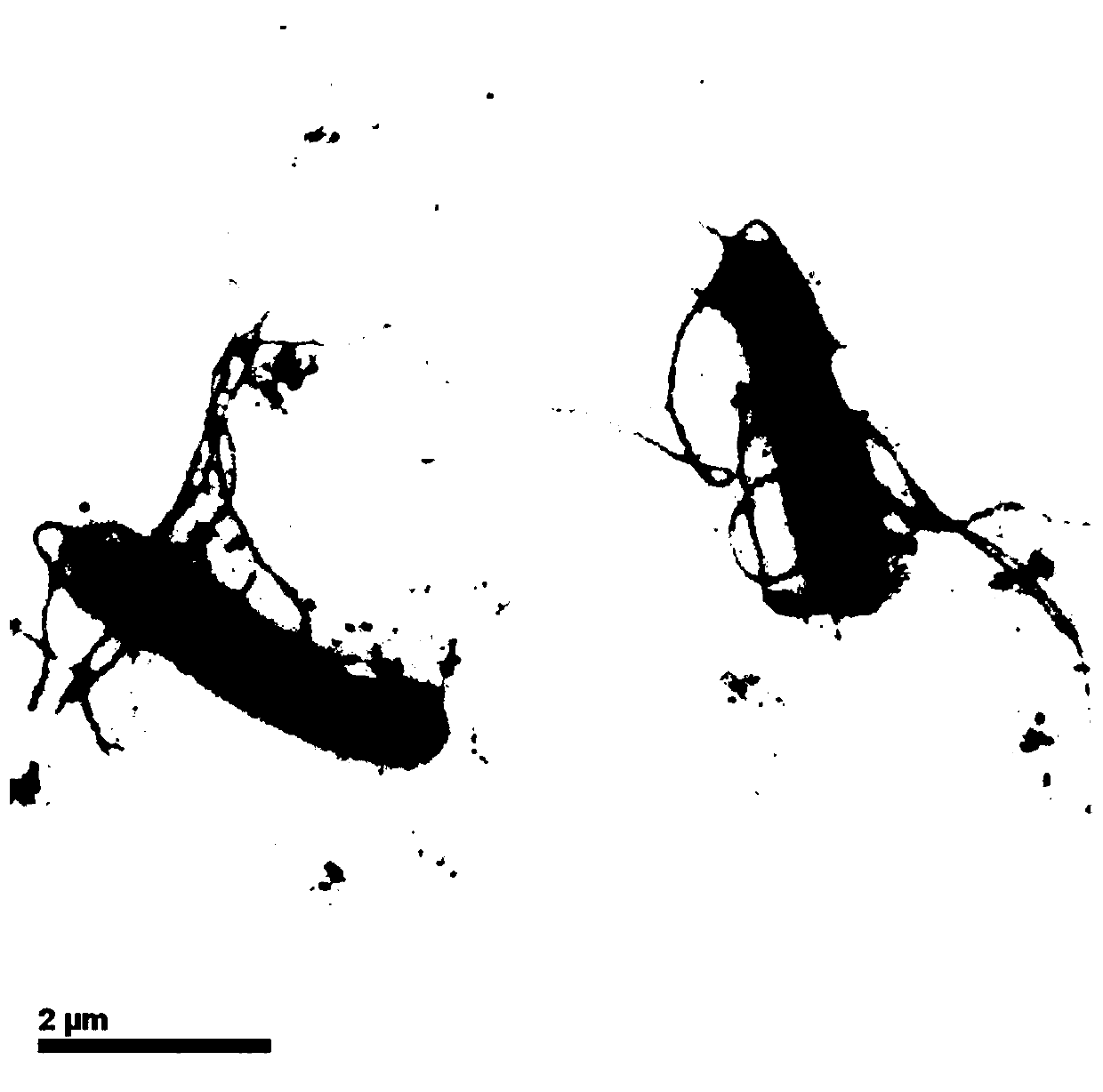A strain of Bacillus ornithine suitable for the treatment of cyanide-containing wastewater
A technology of Bacillus ornithine and Bacillus, applied in the field of water treatment, can solve the problems of lack of experience in the application of halophilic microbial engineering, few successful cases, and microbial poisoning.
- Summary
- Abstract
- Description
- Claims
- Application Information
AI Technical Summary
Problems solved by technology
Method used
Image
Examples
Embodiment 1
[0043] Embodiment 1: Production fermentation of B1132
[0044]B1132 can be produced by fermentation using common corn steep liquor as raw material. When 6% corn steep liquor and 0.1% dipotassium hydrogen phosphate are configured in a 500L fermenter, the pH=7. Inoculate 10% bacteria, stir at 200 rpm, and culture at 28°C for 48 hours to obtain the maximum biomass of B1132 bacteria, with a concentration of 10E9CFU / mL.
Embodiment 2
[0045] Example 2: Treatment of cyanide-containing wastewater from a pesticide factory
[0046] Collect the cyanide-containing waste water (pH = 10, salinity 3%) of thurendan and enter the biological oxidation tank, put in the Bacillus ornithini B1132 strain, the initial inoculum amount is 10% (the concentration of the bacterial solution is 10E9CFU / mL) . Aeration was carried out at room temperature to amplify the bacteria. After 48 hours, the bacteria density in the wastewater in the pool reached 10E9CFU / mL. Afterwards, the cyanide-containing waste water of thuramidan was continuously passed into the biological oxidation tank containing Bacillus ornithini B1132 for continuous treatment, and the residence time was 72 hours. After the above-mentioned treatment, the cyanide-containing wastewater of the pesticide factory was mixed with other low-concentration wastewater such as flushing wastewater. After subsequent conventional treatment, it has achieved discharge standards, and t...
PUM
 Login to View More
Login to View More Abstract
Description
Claims
Application Information
 Login to View More
Login to View More - R&D
- Intellectual Property
- Life Sciences
- Materials
- Tech Scout
- Unparalleled Data Quality
- Higher Quality Content
- 60% Fewer Hallucinations
Browse by: Latest US Patents, China's latest patents, Technical Efficacy Thesaurus, Application Domain, Technology Topic, Popular Technical Reports.
© 2025 PatSnap. All rights reserved.Legal|Privacy policy|Modern Slavery Act Transparency Statement|Sitemap|About US| Contact US: help@patsnap.com

